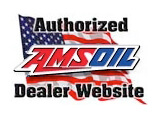29 May A New, Low Cost Oil Analysis
Oil Analyzers Inc. (OAI) has launched a new Oil Analyzers Value Kit (KIT14) that focuses on the most critical used oil analysis tests. It provides less information than traditional kits, but more focus on the areas of most importance to our customers, and it effectively reveals whether the oil is suitable for continued use.
 The new, used-oil analysis kit focuses on:
The new, used-oil analysis kit focuses on:
• oil thickness,
• corrosive wear potential,
• wear metals and
• remaining oil additive components.
These four indicators give outstanding insight into the health of the lubricating fluid and the potential for it to keep the equipment well-lubricated and running smoothly. These areas were chosen because they correlate with the reasons for almost all engine lubricant related failures:
• Lack of oil (not really the lubricant’s fault, but it is a leading cause of failure)
• Oil is too thin to effectively lubricate
• Oil is too thick to effectively lubricate
• Oil is overcome with acids and it leads to corrosive wear
Oil thickness (viscosity) at 100° F is a common design measure for lubricants. The most important property of lubricants is to provide separation of metal surfaces. If oil becomes excessively thin, it can’t keep surfaces separated adequately, resulting in faster wear or catastrophic damage as metal surfaces weld together and tear apart. On the other hand, if oil becomes too thick, it can’t be pumped to critical areas fast enough, resulting failure due to lack of oil.
The most recognizable sign of lubricant breakdown is excessively thick oil, more commonly called sludge. Time, temperature and chemical contaminants all contribute to drive the reactions that thicken oil and lead to sludge development. When oil first starts to degrade, it shows up in the oil thickness (viscosity) test. As this reaction continues, oil becomes increasingly thicker, and finally ends up a sludgy mess. With oil analysis, it is easy to see when a lubricant nears the end of its useful life.
Acid development is the second area of focus in the new report. Just like when you go too heavy on the Italian sausage and need some antacid before bedtime, your engine is being fed a constant stream of acids from combustion gases and acids that are produced when materials in the oil break down. Antacid (detergent) is built into the engine oil to neutralize these acids, but there is only so much available. When it runs out, you get an accumulation of acids that attack metal surfaces, resulting in corroded surfaces that break up quickly when stressed. This is measured with a test called TBN and TAN. TBN is total base number and measures the acid-fighting capability left in the oil. The higher the number, the more you have left. TAN is total acid number. This test is used primarily with lubricants that contain little detergent. TAN is typically run on hydraulic or compressor fluids.
The last two areas are related because they are measured on the same machine, but they represent two different areas. Oil testing labs measure the types and amounts of different materials in oil. Some of these materials are beneficial components of the oil additive system and others are wear metals from the engine or contaminants. The lab needs to know which oil you are testing to plug in the expected amounts of beneficial oil additives for comparison. These materials (e.g., calcium/zinc) need to stay in the oil so it continues to provide good protection. On the other hand, there is always some level of wear, so you always see some wear metals (e.g., iron, aluminum). It is important to watch the rate at which these build in the oil so that something causing the level to spike upward is detected and corrected.
With the new test, there are four key areas that can provide insight and talking points for a new customer: oil thickness, corrosion potential, wear metals and beneficial oil additives.

